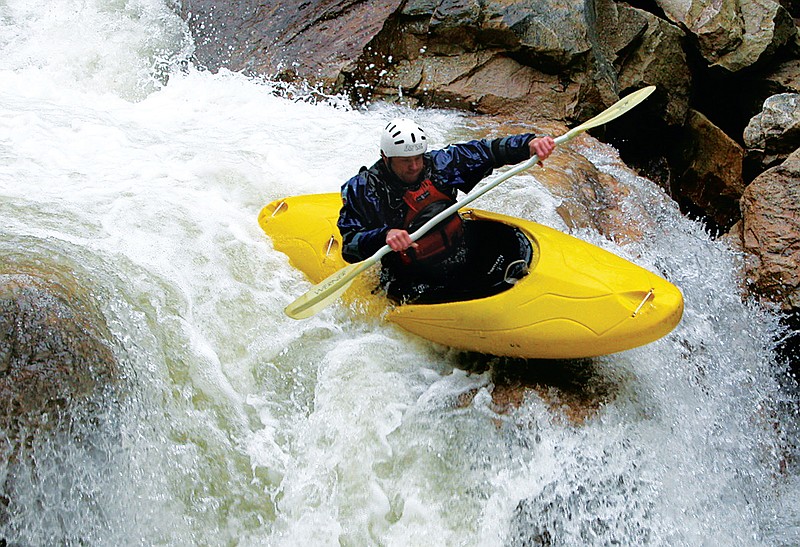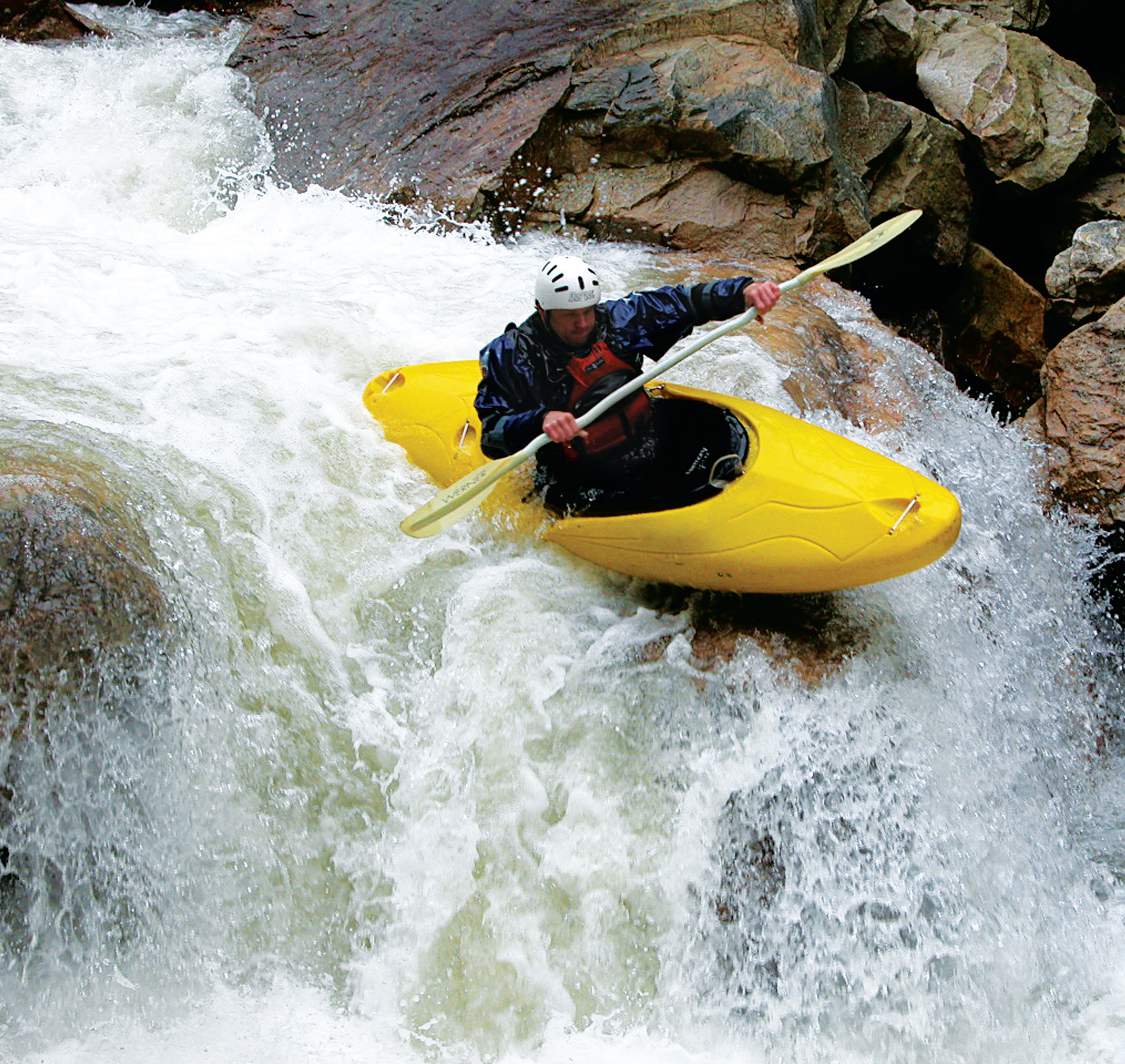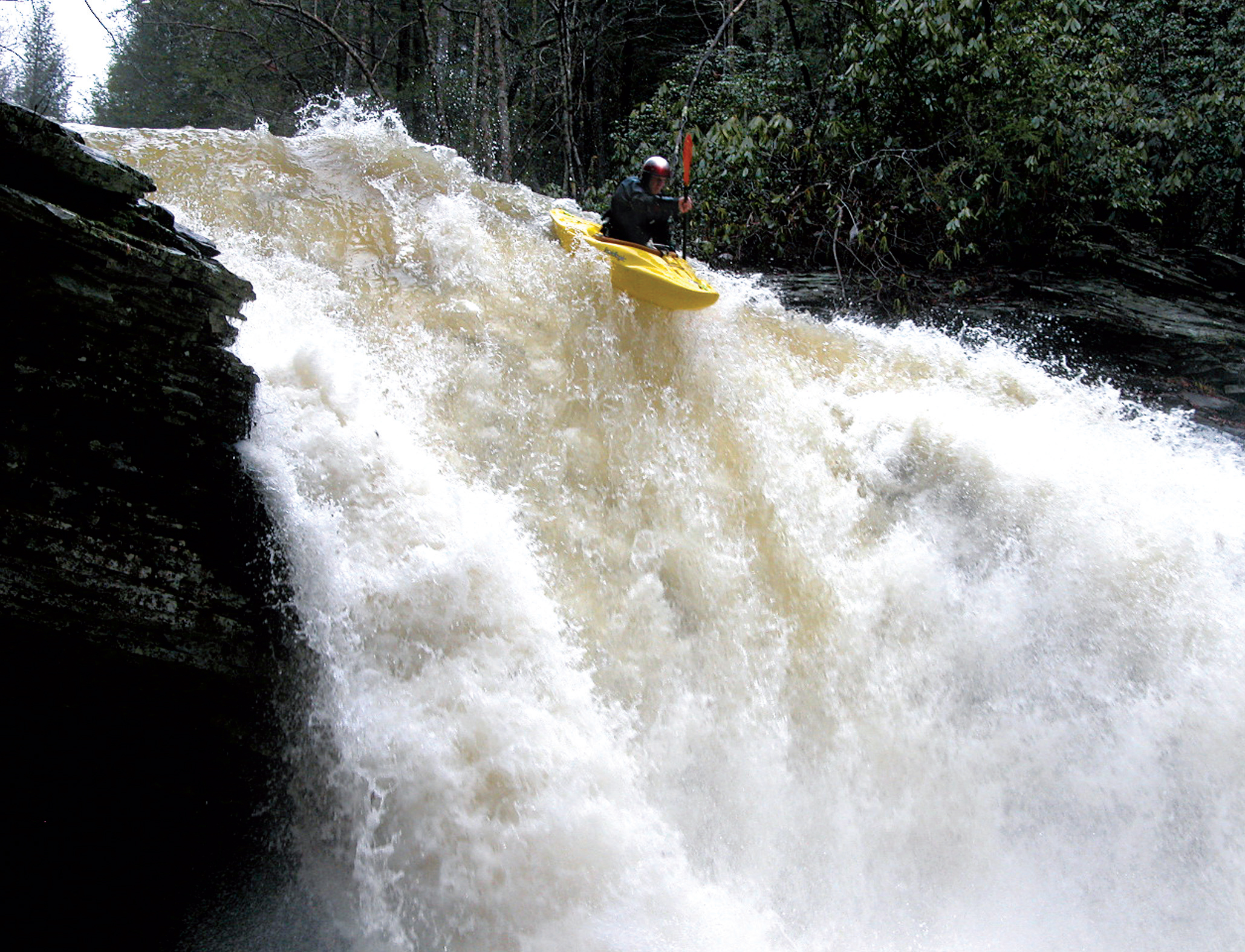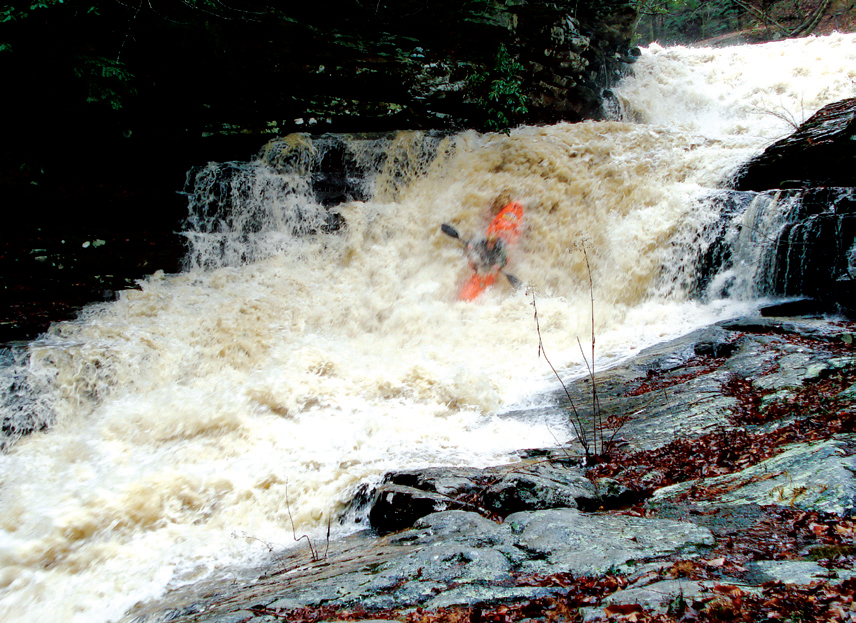When the last leaves fall from the trees and the ground turns cold, steep creek kayakers wait for rain. It comes in waves and moves quickly through the valley. So they obsess over forecasts and water levels. The kayak is always strapped on the car, ready. The paddles and dry suits are set out to grab on the run.
With more than 30 Class 4 and 5 creeks, Chattanooga is the apex of Southeastern whitewater. Locals return and other paddlers travel from all over to run rapids called Shoot Me in the Face with a 9, Superman, Double Drop and Fire Escape.
Bear Creek, which tumbles down Cloudland Canyon, is famous for its gut-wrenching climax, Stairway to Heaven, a 50-foot vertical drop over a 100-foot distance. People have died on these rapids, broken bones, knocked out teeth and dislocated shoulders. But creekers always come back, regardless of the temperamental waters or the frigid temperatures. There are things to prove, they say, about how fearless a person can be.
It draws on the alpha male, the part of them that wants to know they have more moxy and more strength than most people around them, says Johnny Joffrion, a paddler who moved to Chattanooga to be near the Ocoee in the summer and the creeks in the winter.
Joffrion's shoulder was dislocated in a flash flooding creek once and many of his close friends have been dashed along creek beds or boulders. He now has a deteriorating back and bad shoulders on both sides.
But he says he can't stop. "The day I can't do it and have to be out fly-fishing will be very depressing," he says.
Many of the creeks in Tennessee and some in Georgia that are now the bloodline for local creekers were discovered by a Baylor School math teacher named Ron Stewart.
Stewart was the first to descend the Bear in Cloudland Canyon. He was the one who named the rapids and later used a chainsaw to clear the run.
Before he died of cancer in 2008, he had done a lot to promote fervor over steep creek boating and worked tirelessly to protect it. As the local sport grew into the hundreds, kayakers were often at odds with private and public landowners.
At the Bear, the park fought with boaters over access and for a short time banned boating, but Stewart and others pushed hard for open waters. He was later instrumental in negotiating access to many Southeastern creeks. He gained water releases on the Tallulah Gorge in Georgia and helped protect thousands of acres in the North Chickamauga Creek watershed.
Among the fiercest kayakers, Stewart and Mark Cumnock, the owner of Walden's Ridge Whitewater who also discovered many creeks in the area, are considered the godfathers of the sport.
Younger Chattanoogans who have followed, like Bryce Evans, Ben Friberg, Ryan Allen and Nick Murphy, have only tried to build on their discoveries and push the limits further, looking for more local rapids and traveling to some of the meanest parts of the country to tackle whitewater.
Evans, a local 34-year-old who has run every Class 5 rapid in the area and made first descents elsewhere, is one of the ring leaders in a small group of extreme boaters he calls Team Jib.
The size of the group has waxed and waned over the years, sometimes just eight, sometimes up to 50, but some of the members have been boating together for 20 years.
A few years ago they slapped a team logo on the side of an old school bus and used it to travel to other grueling creeks around the country. They have hoodies and hats with the name Team Jib and almost always kayak together.
"You've got to really trust each other... It's like a gang," Evans says. "It's not about who's best. It's about who is the ballsiest."
And this season one of the most revered for his fearlessness is Nick Murphy, Evans says. At 25, Murphy is one of the youngest in the clan, but he's run the hardest creeks-the Bear, Henderson Creek, Little Possum Creek and North Pole Creek-many, many times.
Murphy, and a handful of others, has started running waterfalls between 40 to 80-feet high. In the Southeast, Chattanooga is considered to have one of the highest concentrations of falls. Murphy has checked four off his list, and has four or five more to go, he says.
One day, he hopes for a sponsorship, although the topsy-turvy national economy has made those hard to come by. In the offseason, he does what he can to make ends meet, at times waiting tables, working the odd landscaping job or paddling as a safety kayaker on the Ocoee River. "It's my turn," he says.
His measure of safety, in so many cases, depends on whether he can read the water he tries to travel on, whether he has memorized the currents or envisioned how to dominate the crux of the creek.
But every time he goes to the Bear he remembers why he started steep creeking. Everything is fresh, the swelling of the rain, the trees freshly bent over and the brown water, covered in leaves. The chill of the water burns. So sometimes he throws a helmet full of cold water on his head to charge his adrenaline.
Like always, the telltale sign of the kayaking group's memory muscle is in the first rapid called Edward Scissorhands. It got its name because it slices the skirts that keep water out of the kayaks with its overhanging rock.
The Slide is next, like an untamed water park ride on bedrock, and then the Fishbowl, a 20-foot pour over waterfall.
Then, the crux of the creek, the 50-foot vertical drop over a 100-foot distance called Stairway to Heaven. On the way down, the hillside turns and the water roars and he hopes not to get spun under, mangled by the rocks underneath.
"The water is like a hydrant being shot down a dragon's back," says Murphy. "You ride it and be fluid, intact."
If he's lucky, and he usually is, he'll skip like a pebble to the bottom. The physical risks of some in the steep creek boating world are breathtaking. If you look at a picture of Murphy's small plastic boat falling from an 80-foot waterfall, it seems like something that couldn't be survived.
Ben Friberg, 33, a well-known Chattanooga kayaker and paddle boarder, loves to hear the stories of young lions like Murphy, but he knows the shelf life of an aggressive steep creeker can be short lived.
The toll the sport takes on your body can make a long-time kayaker in their mid 30s feel like an old man, he says, and that's if you survive.
"I have had several close friends die," he says. "Those deaths didn't occur because of lack of preparation. Something just went terribly wrong."
Friberg still goes to the creeks a lot, but he is more focused on calculated risks. Last month, he paddle boarded 80 miles for 23 hours straight one day.
In 1996, one of his friends, Todd Smith, died after being pinned under his boat on Little Possum Creek, and Friberg himself was once flipped into a cave and survived on a small air pocket for several minutes until he could wiggle out.
Once free he tried to hang upside down for a while afterward because he knows some boaters drown after they escape the water because of flooding in their lungs. "It's not worth it to me," he says.



